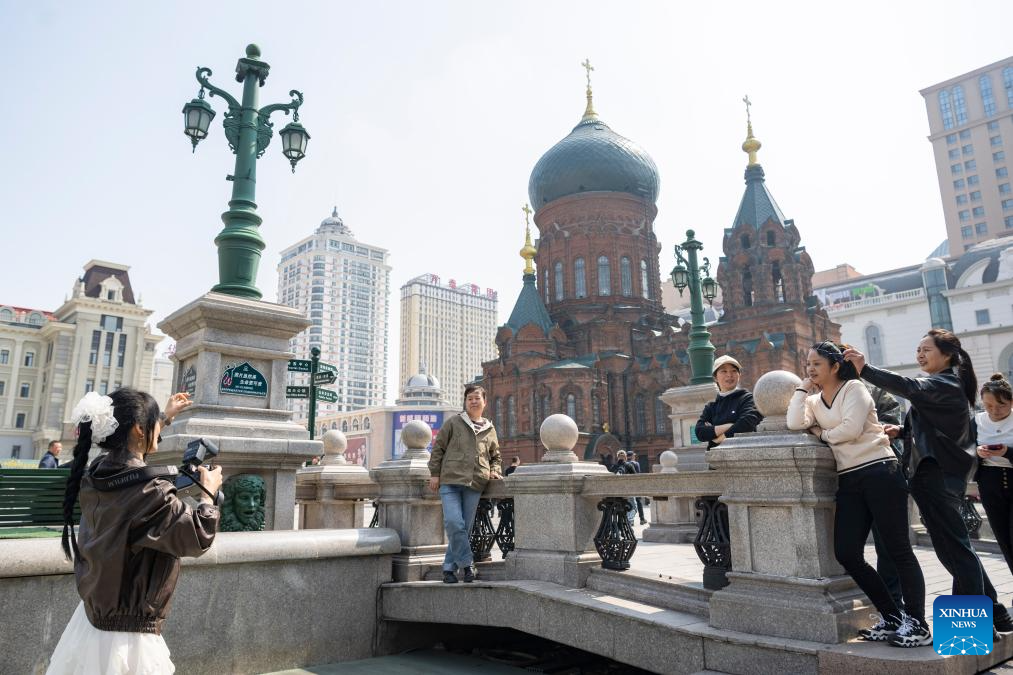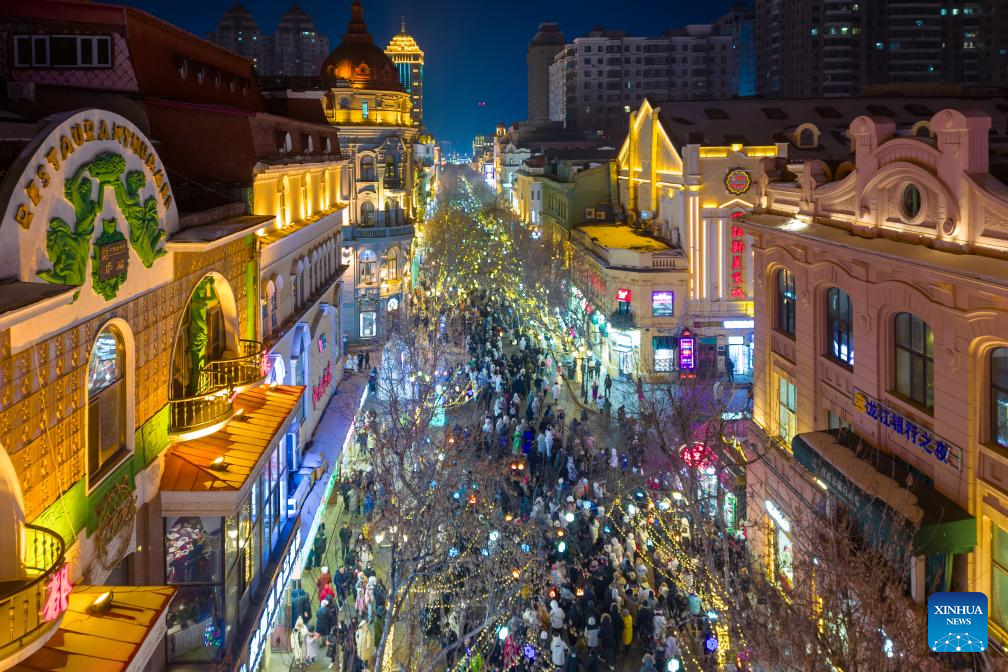Cityscape of Harbin in China’s Heilongjiang
2025-06-27 21:07 Xinhua

People take photos near the St. Sophia Cathedral in Harbin, capital of northeast China's Heilongjiang Province, April 8, 2025.
Harbin is often described by its residents as a city that emerged in tandem with the railway. Iconic buildings such as the St. Sophia Cathedral stand as evidence of European migration, trade and culture that dated back to the late 19th and early 20th centuries after the construction of the Chinese Eastern Railway in 1898. Records show Harbin was once home to people from over 30 countries.
The city, with over 9 million residents, now boasts 16 different architectural styles -- Byzantine, neo-classical, art deco, baroque -- and its number of historical buildings accounts for over 1,000.
Harbin, like many Chinese metropolises, has seen significant cultural development in recent years, which reflects the city's growth and increasing global outreach. Such development has further shaped the city's identity and enriched the lives of residents. (Xinhua/Xie Jianfei)

An aerial drone photo taken on Jan. 9, 2024 shows people visiting the Central Street in Harbin, northeast China's Heilongjiang Province.
Harbin is often described by its residents as a city that emerged in tandem with the railway. Iconic buildings such as the St. Sophia Cathedral stand as evidence of European migration, trade and culture that dated back to the late 19th and early 20th centuries after the construction of the Chinese Eastern Railway in 1898. Records show Harbin was once home to people from over 30 countries.




